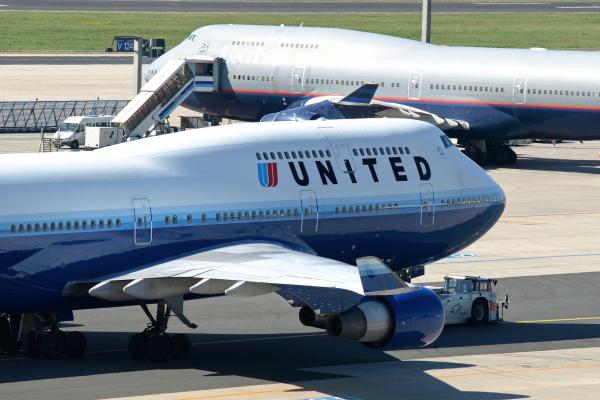Why would airlines reduce the size of our already small seats, at least for those who do not have the dollars or miles to upgrade out of Economy? That is an easy one because the smaller the seats, the more seats can be put into the plane, increasing the revenue from the plane.
Since 2000, seats have become more narrow, from roughly 18.5 to 17 inches. But as a group of aviation journalists points out, the number does not refer to a specific seat measurement. Are we talking about the distance between the armrests or the distance including the armrests – that can make for a further 2 to 4-inch decrease.
During the same period, seat rows became more closely spaced. The pitch was reduced from 34 or 35 inches to today’s 30-inch spacing – unless you have a bulkhead or exit row seat or pay for extra room.
For the citizen scientists among us
The National Health and Nutrition Examination Survey (NHANES) dataset on Americans can provide information on how our bodies have changed during the same interval.
- For men, average body weight has increased 4.4% to 197.9 pounds; height has remained relatively constant at 69.1 inches; and mean waist circumference is 40.2 inches
- Women’s average body weight has increased by 4.1% to 170.6 pounds; height has remained relatively constant at 63.7 inches; and mean waist circumference is 38.6 inches.
- Bi-iliac width, the distance across our pelvis, is a more reasonable measure of our changing size, especially concerning sitting in an airplane seat. It is roughly 11.45 inches for women, and for men, it is 11.7 inches.
By the numbers, despite our increasing size, we all will continue, on average, to be able to sit in those economy seats.
Enter the FAA
But those seat-shrinking headlines of last week were not promoted by concerns over our comfort; they were instigated by the Federal Aviation Administration (FAA) over safety concerns. As more and more of us are packed in, how quickly can we exit in an emergency?
The FAA had conducted its own tests, using 775 adults from ages 18 to 60, mean height of 66 inches, waist circumference of 39.7 inches, weight of 195 pounds, and bi-iliac width of 16.6 ( a bit more than our aggregates, but perhaps a better representation of how we be).
Despite our sizes, when told to exit the aircraft, it took a group of 56 individuals anywhere from 34 to 44 seconds. Unexpectedly, at least for me, the space between seats and the seat dimensions had little effect on exit times.
The FAA constructed several seat arrangements of diminishing seat size and distance between rows. As the distance between rows decreased, the number of individuals no longer able to get into the middle seat increased, as did our discomfort.
- 62% found it “difficult or very difficult” to get into that middle seat
- 66% found the seat “uncomfortable or very uncomfortable.”
- 73% found it “difficult or very difficult” to get out of that middle seat
- 58% found the seat “unsafe or very unsafe” for a short flight; for longer flights (2+ hours), that percentage rose to 75%
The Hidden Dimension
It is all well and good that we can be packed more tightly into aircraft safely, assuming you are content with the FAA analysis. But increasing the number of passengers onboard runs into an immutable set of physical laws. There is a weight limit to a plane’s ability to get and remain aloft. Additionally, those weights need to be balanced, front to back and side to side. While it is true that the bulk of the plane’s weight is from its structure and fuel load, passengers and their baggage remain a critical variable. And our weight has been steadily rising.
In 2019, the FAA released a circular to the airlines on weight and balance of aircraft. Here’s a fun fact, airlines can, if necessary, weigh not only your baggage but, with your permission, you. Among the new standards,
- For women, the average weight with their carry-ons will increase from 145 pounds to 179 in the summer and from 150 to 184 pounds in the winter.
- Men’s average weight with carry-ons will increase from 170 pounds to 190 pounds in the summer and from 175 pounds to 205 pounds in the winter.
- Those carry-ons contribute 16 pounds, up from 10
For those looking for “downstream” effects, no longer providing meals in economy reduces weight and maybe one more reason we, at best, get a 1-ounce bag of pretzels. There is another effect of these changes in weight standards; airlines will have to block seats.
“Take a 180-seater aircraft. Assuming all 180 seats are occupied by males, the new weights mean the aircraft will see its weight increase by 3,600 pounds. That is the equivalent of 19 passengers at the new weights. If the airline operating that aircraft has to remove 19 seats from inventory, that means 11% less revenue. In 2019 on average US airlines saw a net income of $3,658 per departure with an average fare at $407.07. There’s not much margin..”
Not to worry, airlines can compensate for the shortfall by increasing fares for the remaining seats. Fares have increased by upwards of 25%, and as we now see, it is not all due to rising fuel prices; a portion of those increased fees reflect our increasing weight. I can see the academic minds turning; perhaps the next great epidemiologic study, Obesity reduces your lifespan while increasing travel costs.




